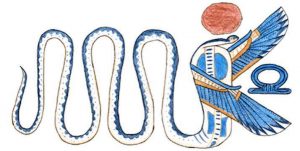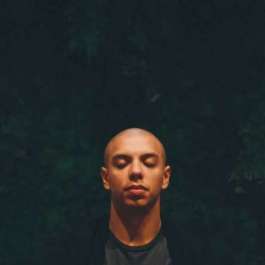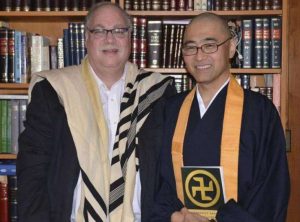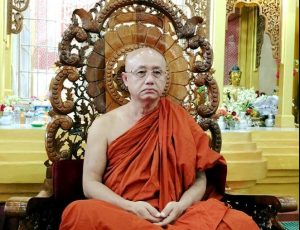Sotheby’s has opened its new Maison in Hong Kong, a conceptually bold and innovative flagship in Landmark Chater in Central District. Remarkably, the venerable auction company has chosen for its inaugural exhibition a captivating showcase of Buddhist sculptures, which covers ancient Gandhara and China’s Ming, Sui, and Song dynasties. This carefully curated collection is called “Bodhi: Masterpieces of Monumental Buddhist Art” and offers an overview of the artistic development of Buddhism through sculpture. Through a unique space and the firm’s formidable access to some of the most beautiful pieces of art, “Bodhi” invites visitors to glimpse another world of enlightenment and eternity, one that transcends our transient existences and vanities.
I had the pleasure of sitting down with Nicolas Chow, chairman of Sotheby’s Asia and Worldwide Head of Asian Art, to discuss the exhibition and explore its underlying philosophy. Nicolas first took me on a guided tour through “Bodhi,” before explaining the significance of this sacred art display. “When we were selecting an exhibition to inaugurate our space, we knew it had to be something extraordinary,” he explained. “Our focus turned to monumental sculptures held in private hands.”
This quest for diversity led the Sotheby’s team to securing a range of exquisite sculptures that would make an impact on visitors.

Among the highlights are two Buddha statues from Gandhara, both commanding viewers’ attention in the “sacred temple space.” The majestic standing Buddha sculpture immediately captures the eye when one enters the room, while the seated Gandharan Shakyamuni Buddha, its hands in a preaching mudra, is at the far end of the Grotto gallery but framed by its beautiful contours—a mystical portal if I ever saw one. The term “bodhi” was chosen for the notion that the creation and enjoyment of Buddhist imagery can assist in attaining enlightenment, or awakening: bodhi.
One standout piece is a bronze seated Buddha from a late 15th-century Ming dynasty temple. It is the largest statue in the collection. This sculpture resided in France for more than a century, gracing the Champ des Mars in Paris before being moved out during the Second World War. Its perilous journey, threatened by the risk of being melted down for arms by the Germans, culminated in its triumphant return to Asia. Nicolas emphasized that each statue carried its own story, transcending mere acquisition. Collectors become part of this rich narrative, connecting with the art across time and space.

The exhibition space at Sotheby’s Maison is fundamentally experiential—a temple devoted to aesthetics. Divided into the Grotto, Pantheon, and Sanctum, it evokes echoes of Dunhuang, Athens, and Egypt, respectively. Nicolas shared with me the idea behind the area’s remarkable names: “Our mood-setting predominantly favors darkness. It allows visitors to lose themselves in contemplation, forging a profound communion with the objects.” This experiential room’s high-ceilings, approximately six meters tall, provide an ideal backdrop for monumental sculptures, emphasizing their grandeur and height.
As I walked through this “sacred space” that Sotheby’s had set up, I found myself slipping into a kind of meditation—an emptiness where conscious and subconscious unite in blissful harmony. Each statue seemed to evoke glimpses of past lives. The Song dynasty Water Moon Guanyin resonated with memories of Dunhuang’s Yulin Grottoes, where Zhang Daqian’s transformative journey of painting unfolded. Behind the Gandhara statues, an alluring heart song echoed from the Indo-Greek descendants of Alexander the Great’s warriors in what is today Pakistan. And looking at the residual pink pigment on the Dharma wheel on a gorgeous Sui Bodhisattva’s forehead, I glimpsed Empress Siu walking through the ancient capital of Chang’an, today Xi’an.
The interwoven beauty and luxury of these sculptures transcend time, inviting us to explore the eternal through art.

It seems that Buddhist art resonates deeply with Nicolas’ aesthetic. “I personally have always connected with sacred objects made for transcendent meditation or devotion, rather than for decoration. They have a very different energy.” He says: “You appreciate the peace and compassion that Buddhist sculptures convey. They have the remarkable ability to transport you to a state of truth, a realm beyond the ordinary.”
Having built a long and storied career at Sotheby’s, Nicolas’ expertise in art extends across cultures (he started with Chinese ceramics). Over his years with the auction house, he masterminded record-breaking sales, such as a Ru Guanyao brush washer from the Northern Song dynasty for HK$290 million. This sale set the world record for Sotheby’s Chinese Ceramics category in 2017. He has also introduced many notable collections to the market. But statues hold a special allure for him, embodying a blend of magic and sensuality. Perhaps it is his fondness of Hellenistic sculpture, of which he is an avid collector, which ties into his fondness for the Gandhara statues at the “Bodhi” exhibition.

Sotheby’s is keen to present its Hong Kong Maison as an unprecedented new concept in the world of auctioneers. Nicolas emphasizes the Maison as a dual proposition: “upstairs” and “downstairs.” “Downstairs” is the experiential space. With the salons “upstairs,” it is like visiting the home of one’s best friend. The concept is not simply to experiment with retail, but to push the boundaries of art genres by expanding people’s interests across new categories—such as a dinosaur skeleton, a suit of samurai armor, paintings by Marc Chagall, another Sui bodhisattva head, and a Ming-era Huanghuali cupboard that is valued at HK$5 million. “We aim to make the experience fun, portable, intellectual, and approachable.” The new concept’s philosophy is that I could have bought a baby dinosaur skeleton, and it would be delivered to my doorstep in a few days’ time. The idea that I can own a real museum piece is simply liberating.

Downstairs, the sacred space of the pantheon, grotto, and sanctum, will become home to more exhibitions, festivals, and events after “Bodhi” is concluded. Nicolas says: “Pushing the limits of the experience, we’ve set the bar high from the start.” Looking ahead to January 2025, he is thrilled about hosting the BUTOH Dance festival, a unique Japanese dance expression invented after the Second World War. Nicolas told me excitedly: “It promises to be an exhilarating event for the city—one that you wouldn’t typically find here, especially in the heart of Hong Kong.”
When surveying the future of the art collector’s scene in Hong Kong, Nicolas hopes that this new concept of “collecting at one’s fingertips” will shift people’s minds, changing how art is appreciated and perceived. “Whether it is seasoned collectors or newcomers, people are realizing that art is accessible. For us, we truly believe that art is an essential part of a good life. You do not need to spend millions to acquire something meaningful. Each object becomes a unique journey—a departure point for thoughts and feelings. Ultimately, people can create their own stories by making art personal.”
“Bodhi: Masterpieces of Monumental Buddhist Art” is free to all and runs until 11 September at Sotheby’s Maison, Landmark Chater, Hong Kong.
See more
Bodhi (Sotheby’s)
Related features from BDG
Buddhica Antiqua: Preserving Ancient Buddhist Heritage with the Digitalisation of Gandharan Artefacts Team
The Fengxian Temple and Wu Zetian’s Esoteric Legacy
Guanyin in the Desert: Louvre Abu Dhabi’s Director Manuel Rabaté on Universal Faith and Beauty












